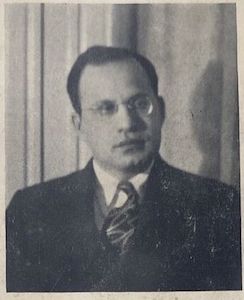Later the same day aspiring actress Lynn York shows up at the boarding house. She is paying $60/month for an upstairs room, but no kitchen privileges for her. Mrs. B is greedy and a miser we soon figure out. Within hours Curt and Lynn are hooking up and doing the dirty deed in the dirty basement where while putting the moves on Lynn Curt is bothered by the irritating sound of a dripping pipe. He vows to fix the leak though that task is not on the insanely long list of arduous work Mrs. Block expects of him.
While dealing with the plumbing problem Curt discovers a gruesome surprise and jumps to conclusions. A bit of detective work supports his rash theory and he sees dollar signs. He schemes to blackmail his landlady and employer. Soon he finds his paltry salary increased to a cool $1000/week.
And if you haven’t already figured out that the tables will be turned then you don’t know your crime fiction.
Reading The Glass Heart is like travelling back in time to a 1950s movie palace watching a B movie programmer. It’s crammed full of action, double dealing, manipulation, greed, lust and crime. Everyone is out for himself or herself. James M Cain, who penned multiple densely packed novels about two timing lovers and how greed controls their lives admired the book so much he 1. wrote a praiseworthy blurb for the Julian Messner first edition dust cover and 2. wrote a screenplay adaptation that unfortunately was never produced. Even he recognized the cinematic potential of this hard to resist story.
While it’s not hard to predict that Curt and lovely Lynn will hook up within hours of meeting I doubt many readers will be able to predict the unusual plot twists. Soon a handful of supporting characters descend upon Mrs. Block looking for handouts including Elise, Lynn's future roommate and a member of an evangelical church devoted to enlisting new members and coaxing money out of them to help build their new church.
The story is overloaded with plot and incident. It’s almost like reading two books in one at the same time. There’s almost no time in the action-filled pages to question the often outlandish turn of events. But I did! And frequently. Some of my nagging questions included: Why on earth is Mrs. B such a pushover? Why didn’t she just throw Curt out of her house rather than be bled dry? And why is Lynn so simple minded and easily manipulated? I guess there is no room for common sense in potboiler fiction. The book exists solely to explore crime and base motives (mostly dealing with lust and avarice) but offers no insight into any of the reasons the characters need so desperately what they long for. I wasn’t asking for heightened literary reasons just a few mundane ones.
Late in the book it all turns a bit ridiculous. Elise receives a telegram that her husband was killed in action overseas. She refuses to accept this and in her religious mania keeps praying that hubbie be returned to her. Like a true believers she’s asking for a miracle. One guess as to how that turns out. Because of course every absurd coincidence one can possibly imagine will be crammed into these 192 pages.Why have one kook when you can have two? Mrs. B is later revealed to be a bit of a loon herself. Lynn spends much of her time eavesdropping throughout the book and hears her landlady talking to herself and singing in a little girl’s high pitched voice. She has conversations with her dead husband, very intimate and revealing conversations. It all leads to a confrontation between the two woman involving a revolver and a golf club that doesn’t end well at all.
Do you think anything will end well in a book of this sort? Think again!
It starts off as noir but some odd detours and intrusive subplots among the minor characters transform the book to a quasi romance. This schizoid state results in a near parody of noir by the time you get to the two climactic moments. Remarkably – almost unbelievably – for something so laden with doom, insanity and murder, both intentional and accidental, it all ends with a cop out finale that includes a wedding and happily ever after honeymoon in New Mexico! I gather that Holland opted for a hearts and flowers finale because she wants the real villain of the piece to be revealed as a vile monster who “deserved” to die. And she seemed to want to make her leads into decent people who were victims themselves. Really strange considering they were crooked and corrupt from the get-go. When the penultimate chapter exposes the villain’s wide ranging schemes of cheating, thievery and mean-spiritedness one wonders if Holland knew a similarly horrible person and this was a revenge piece.
 |
| Marty Holland (1919 - 1971) |
Stark House has reprinted all of Marty Holland’s crime novels over the past year and a half. The Glass Heart is the newest reprint added to that small pile of books. For decades this novel was unavailable to mere mortals like you and me because the few copies for sale were listed by booksellers at unaffordable collector’s prices. It’s wonderful to have Marty Holland’s books all available to the general public in Stark House’s usual handsomely produced editions. For lovers of noir, kooky melodrama and twisty plotting these books are a must have. Highly recommended – even with all the caveats listed above. The Glass Heart is genuine thrill ride that will leave you both gasping in awe and laughing in shock.




